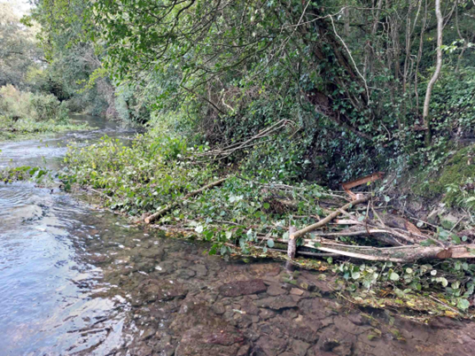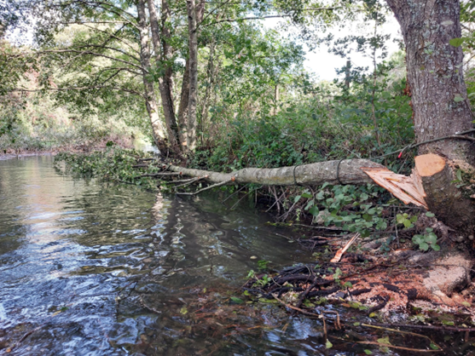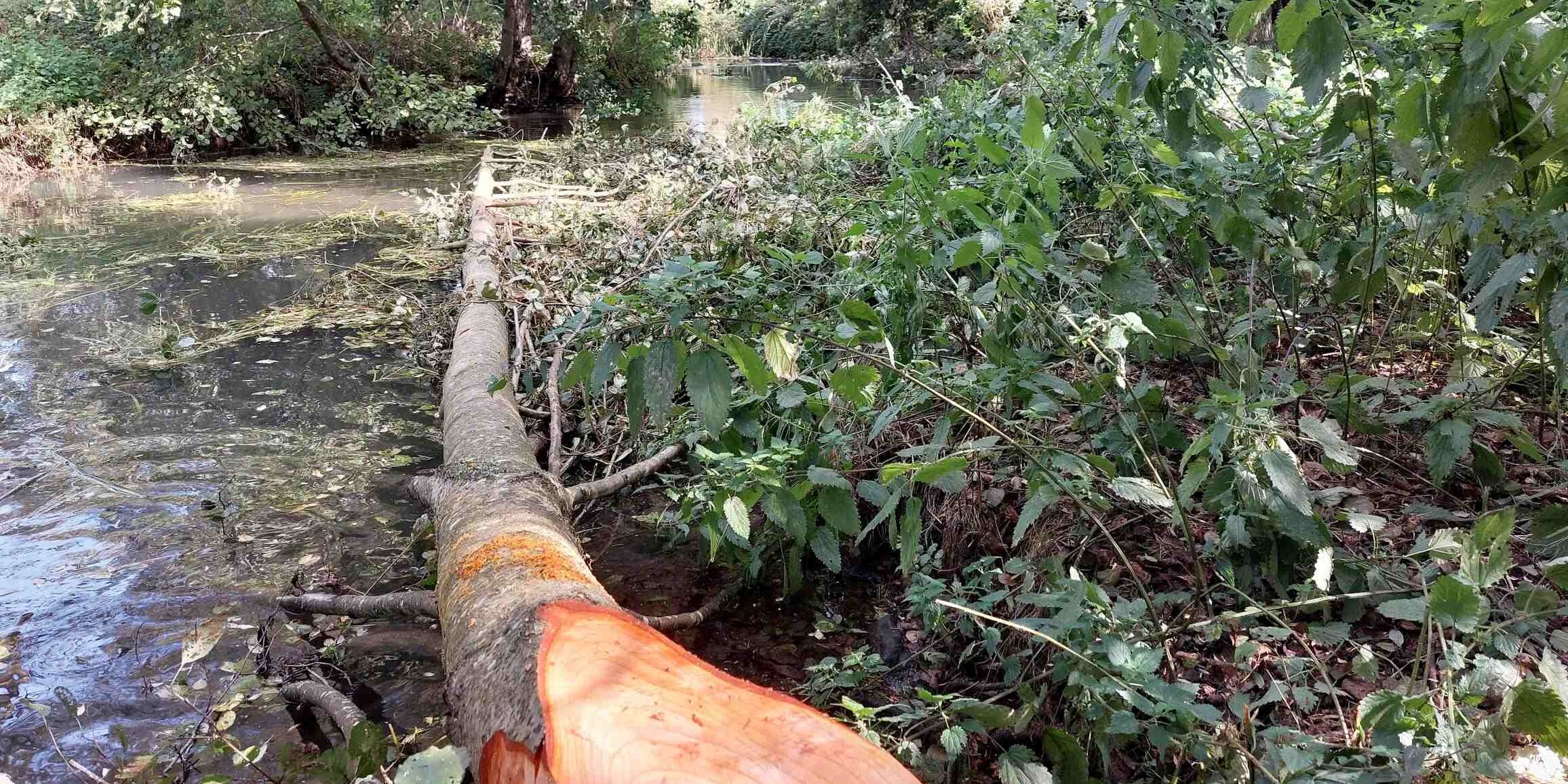In Autumn 23, BART undertook a river restoration project on a section of the Sherston Avon near Easton Grey in which nine complex woody material structures were built along a 150m stretch of the river. This project was made possible with funding from the Environment Agency Fisheries Improvement Programme, The Halpin Trust and the Easton Grey Fishing Syndicate.
The plans were agreed following on from a river walkover with members of the Syndicate in 2022 as a key means to sustainably manage and restore the river for wild fish. Currently, the Sherston Avon only achieves a poor ecological rating under the Water Framework Directive, largely due to groundwater extraction, and recently combined with the impact of climate change, has resulted in reduced water levels, river flows, and subsequent reductions in dissolved oxygen levels, which can cause stress to aquatic wildlife. During initial surveys and walkovers, it was determined that the river channel at this location which has been historically altered was overwide, and too shallow during periods of dry weather, and this section of river would benefit from the addition of complex woody structures.

Through securing woody structures into the river channel at the right location, we can ‘pinch’ the channel in strategic locations, encouraging natural river processes, creating diverse in-stream habitats, and providing refuge areas for juvenile fish. All of this contributes to the river’s resilience to the impacts of climate change. By concentrating and increasing the flow adjacent to the structures, natural patterns of scour and deposition are encouraged allowing gravels to be exposed and washed clean providing habitat for many invertebrates, river plants and spawning fish such as brown trout.
With thanks to volunteers from the Easton Grey Fishing Syndicate and a volunteer team from Mott McDonald, BART staff spent three days in the river building the structures. Working with a contractor to selectively harvest woody material from the site, team members packed woody brash behind a large woody deflector (tree trunk) into the river adjacent to the bank to create roughly wedge-shaped designs, securing them in place with aged chestnut stakes. During higher flow events, these structures will overtop with water and begin to fill with suspended sediment that is then dropped from the water as it is slowed down as it passes through the structure. Over time bankside vegetation will begin to grow from within the structure as it becomes an extension of the riverbank, creating new and important marginal habitat. Additionally, several hinged trees were created for this project. To do this, a contractor cut a bankside tree halfway through the trunk, then carefully felled the tree into the river channel. As the tree remains attached to the stump, it continues to live and will not wash away in high flow conditions. Hinged trees are another means we can restore complexity to river habitats and mimics what naturally occurs to bankside trees.

We would like to thank all our funders, hardworking volunteers and the Easton Grey Fishing Syndicate for their help making this project possible and their commitment to improving our rivers for nature!








